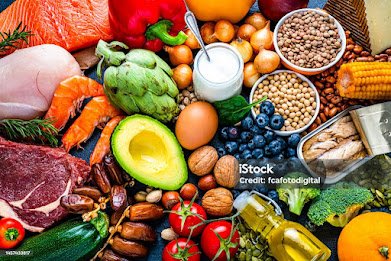MAY 1 ,2024
BY NR.BALOCH
Scientists Work to Make Healthier White Bread
Introduction
Bread is a cherished food item that is a mainstay in many diets around the world due to its versatility and ease of use. Because of its mild flavor and smooth texture, white bread has long been a favorite among bread varieties. However, doubts over its nutritional worth have damaged its reputation. Scientists are putting up endless effort to develop healthier alternatives to white bread that are still aesthetically pleasing and provide better nutritional value in response to these obstacles.
Challenges with White Bread
White bread has been criticized for having a high glycemic index and little fiber, yet being very popular. Regular use of white bread has been connected to health problems like diabetes, heart disease, and weight gain. Furthermore, refining eliminates some of the vital elements found in whole grains, producing a product with little nutritious value.
Scientific Innovations
In order to overcome the drawbacks of conventional white bread, scientists have started using novel ingredients and baking methods. A possible strategy is to use other flours, like chickpea, coconut, or almond flour. Compared to refined wheat flour, these flours have higher levels of protein and fiber and are naturally gluten-free.
Benefits of Using Alternative Flours
Almond flour is a nutrient-dense option for baking bread because it’s high in protein, healthy fats, and vitamin E. Because coconut flour has a high fiber content and a low carb content, it can be used by people on low-carb diets. Compared to regular wheat flour, chickpea flour is nutrient-dense, filling, and full of fiber and protein.
Impact of Fiber-Rich Additives
Scientists are investigating the use of fiber-rich additions in addition to substitute flours to improve the nutritional profile of white bread. Bread can have more fiber without losing flavor or texture by using ingredients such resistant starch, oat fiber, and psyllium husk. These supplements support healthy digestion, assist control blood sugar, and increase feelings of fullness.
Role of Technology
Technological developments have been instrumental in the creation of healthier white bread. Sourdough fermentation and gradual proofing are two modern baking methods that can enhance the nutritional value and digestibility of bread. Moreover, automation and high-precision machinery guarantee constant quality and lower the possibility of human error in the manufacturing process.
Automation for Consistent Quality
Manufacturers can keep tight control over the bread-making process thanks to automated mixing, kneading, and baking technologies, which produce bread with a consistent texture and flavor. Measures for ensuring quality, like controlling humidity and temperature, guarantee that every loaf satisfies the required requirements for flavor and freshness.
Consumer Preferences
There’s been a discernible move toward better bread options as consumer awareness of health and wellbeing grows. While flavor and texture are still crucial considerations when choosing bread, a growing number of consumers increasingly place more importance on ingredient transparency and nutritional value. Manufacturers have reformulated their goods and introduced healthier substitutes for classic white bread in response to this shift in consumer tastes.
Importance of Taste and Texture in Bread
In the realm of bread, flavor and texture are still quite important, even with the focus on nutrition. In order to attract consumers, healthier white bread variants need to find a balance between taste and nutritional value. The newest developments in texture optimization and flavor profiling guarantee that healthy options taste and satisfy just as well as their more traditional equivalents.
Environmental Considerations
Concerns about bread’s nutritional value are not the only environmental effects that are becoming more well known. In the baking sector, sustainable measures like using less energy and using organic ingredients are becoming more and more crucial. Furthermore, reducing food waste at every stage of the supply chain aids in lessening the environmental impact of bread production.
Reducing Food Waste
Bread is one of the most wasted food items globally, with millions of tons discarded each year. To combat this issue, manufacturers are exploring creative solutions such as upcycling surplus bread into new products or partnering with food banks to redistribute unsold inventory. By reducing food waste, the industry can contribute to a more sustainable and environmentally friendly future.
Future Prospects
Looking ahead, the future of white bread lies in continued innovation and research. Researchers are looking at new ingredients and ways to make bread that will increase its nutritional content without sacrificing its consumer appeal. Furthermore, bread preferences and dietary demands can be tailored by individuals thanks to developments in personalized nutrition.
Potential for Personalized Nutrition
Bread products that are customized to an individual’s genetic predispositions and specific health goals may become available soon thanks to personalized nutrition technology like microbiome analysis and genetic testing. This customized approach to nutrition has the potential to lower the risk of diet-related diseases and improve overall health outcomes.
Conclusion
To sum up, the pursuit of creating healthier white bread is a complex undertaking that takes into account advancements in science, technology, and customer preferences. Through the use of substitute ingredients, adoption of environmentally friendly procedures, and an emphasis on nutritional value, researchers and producers have the potential to completely transform the bread market. White bread appears to have a brighter and healthier future than it did a few years ago with continuous research and customer backing.
FAQs
Is whole wheat bread always healthier?
For many people, whole wheat bread is a better alternative to white bread because it typically has more minerals and fiber. But since everyone’s nutritional requirements and preferences are different, it’s important to take taste and texture into account while selecting bread.
Can white bread ever be completely healthy?
Though whole wheat bread still offers more nutritional value than standard white bread, innovations in baking techniques and component formulation have produced healthier alternatives. White bread types with higher nutritional content can be produced by producers by utilizing fiber-rich additions, alternative flours, and sustainable procedures.
What impact do additives have on nutritional content?
By boosting fiber content and supplementing vital nutrients, additives like vitamins and fiber-rich substances can improve the nutritional value of bread. To avoid artificial substances or overprocessing, which might offset some of the health benefits, it’s crucial to select additives wisely.
Are there any white bread options that are gluten-free?
Yes, there are gluten-free alternatives to traditional white bread made from







